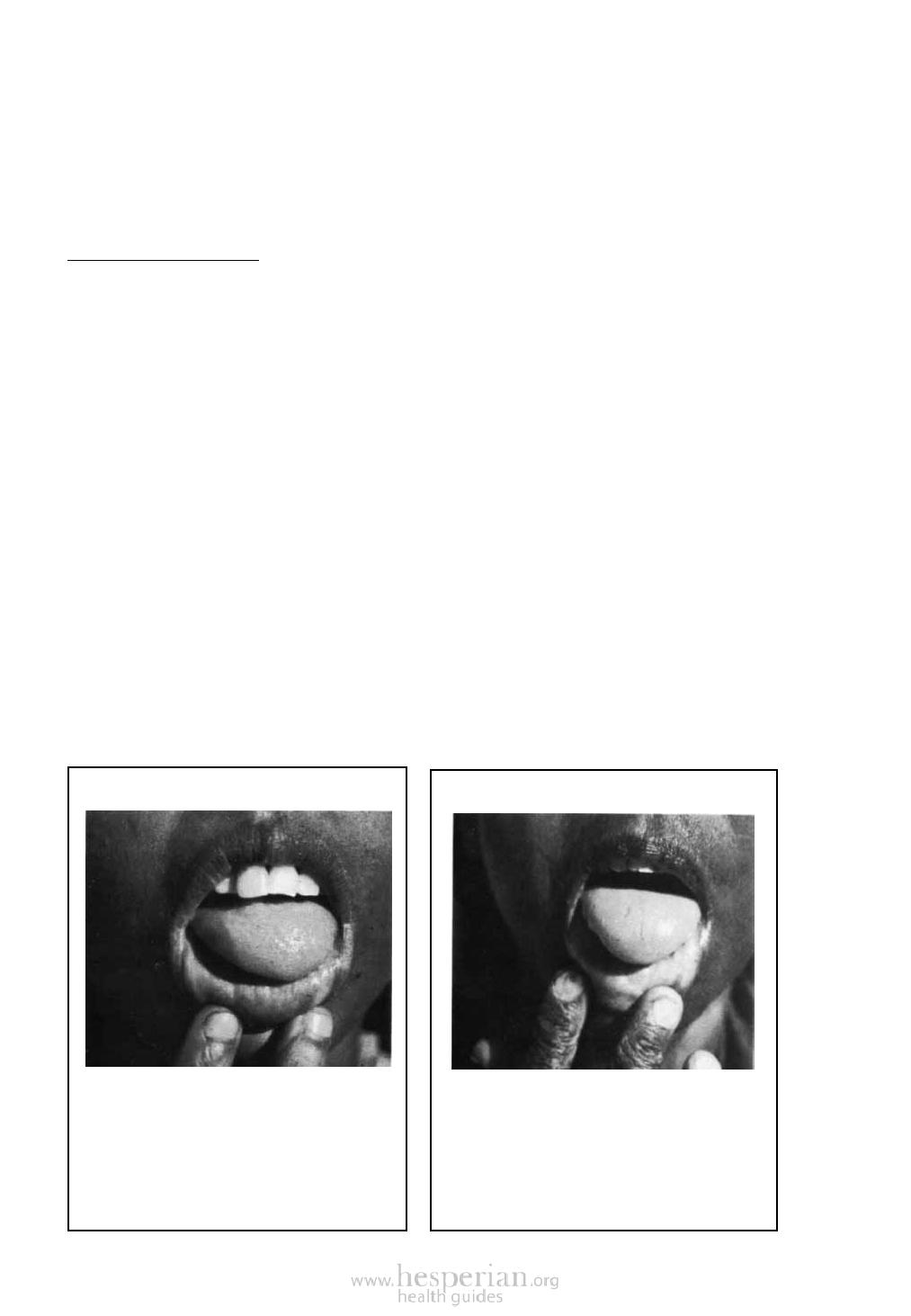
25-18
Finding out about the nutrition of persons other than children
In conducting a nutrition survey, the main focus should usually be on the children.
But other persons may also have nutrition problems—especially women, old
people, and sick people.
Checking for anemia:
Anemia is one of the most common problems for pregnant women and
breastfeeding mothers. It may also be a problem for both children and adults in
areas where there is hookworm or malaria. So health workers may want to consider
checking for anemia as part of their nutrition survey.
Few health workers have the equipment needed for testing the level of
hemoglobin (red coloring) in the blood. But they can often tell whether a person
has anemia by checking for paleness of the lips, gums, tongue, inner surface of the
eyelids, fingernails, or palms.
Health workers who are inexperienced in judging paleness can use a set of life-
size color photographs showing the lips and tongues of two people—one normal,
the other anemic. These photographs can be held up next to a person being
checked for anemia.
The cards we show here have been produced (in color) by the Voluntary Health
Association of India (VHAI).
NORMAL
APPROPRIATE
ANEMIA
This woman does not have anemia. She
has red and healthy lips and tongue. After
one month of treatment the anemic person
should look like this. She should feel stronger.
Continue treatment for another month. If
she still looks pale after the first month of
treatment, refer the patient to a health center.
Iron tablets cost a few cents each, but are free
from Government health centers.
This woman’s lips and tongue are very pale.
She has severe anemia. This is dangerous. She
needs treatment with 2 iron tablets taken with
food every day. If the patient has pale lips and
tongue, but not as pale as in this picture, give
1 iron tablet every day with food. Children
over 2 years old who have anemia need 1 iron
tablet daily with food.